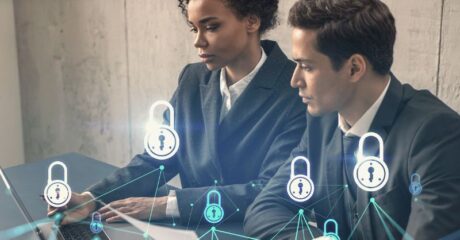

Anxiety, depression, frustration, anger, and stress can become problematic, especially if you cannot access a therapist. What do you do in lockdown or isolation? How do you talk about the issue chewing at you, day and night? Mental health apps became more popular during the Global Pandemic, and mental health app developers were in demand. People were held in isolation. Hospitals’ waiting rooms had to be thoroughly decongested, so you could not visit a doctor or a therapist without an appointment. These apps became life savers, as people could use them to monitor and improve mental health and connect with a therapist online. Let’s explore what mental health app development entails, we advise you to read also other relevant Topflight Apps’ articles.
The Mental Health Market
Digital mental health solutions have grown year-on-year, even after the Global Pandemic ended. A Grand View Research revealed that overall mental health was around $5 billion – a 54% growth from 2021. The digital mental health market, for example, therapy uberization, will continue to grow in 2023 and beyond.
Categories of Mental Health Apps
There isn’t a clear definition for mental health apps. The number of mental health apps on Google Play Store and Android platforms is relative and dependent on each expert’s definition of mental health. In this regard, mental health applications on Play Store range from 10,000 to 30,000, depending on what is regarded as mental health.
Mobile therapy services include:
- Chatbots
- Teletherapy applications
- Mood and symptoms tracker
- Self-improvement solutions
- Psychological therapy mobile development and support
Mobile mental health services help with meditation, anger management, anxiety management, obsessive-compulsive disorder (OCD), panic attacks, breathing exercises, and stress management. If we cast a wider net, we can have mood-tracking apps, yoga apps, wellness and workout apps, and meal planners.
Features Your Mental Health App Developers Should Consider
Personalisation
A mental health app should instantly connect with the audience. Take time to define your UI/UX features. Characterisations like font size, music or sound, and user profile are critical. Your mental health app should be welcoming from the get-go. Remember that you are trying to help people with fragile mental health.
Appointment Scheduling
You should be able to help patients and therapists connect easily. Patients should be able to book appointments, save dates on the app’s native calendar, set reminders, and monitor therapy sessions. Patients and therapists should be able to monitor progress and set progress lines against established standards.
Notifications
When you create a mental health app, it should help people set notifications. Meal trackers will help people track what they eat and define when they should eat. Some mental health applications help users through intermittent fasting, reminding them of their fasting and eating periods and suggesting food ideas.
Responsive
It’s not enough to build a tracking app or an app that connects patients with therapists. A responsive app will ask about your mood. Some keto diet apps will ask about your mood periodically. Users can select from various moods, including satiated, depressed, happy, and weak. With each chosen mood, the app will automatically suggest things the users can do to overcome a negative mindset. Responsive apps can show readers motivational quotes as they progress against their weaknesses. These types of apps can become bestsellers amongst users because the users will feel the empathy and sincerity of the app.
Social Networking
Learning how to develop a mental health app? You should strongly consider social networking. Live feeds where users can share their progress, ask questions, and meet with other users is a sure winners. Create a unique social networking space when creating your mental health app. Remember, however, that online scammers can infiltrate your social networking space and defraud unsuspecting victims. You must set up necessary security protocols like auto-alert whenever a user asks for financial help from another user.
Messaging & Video Calls/Chat
Mental health apps can also have messaging and video chat features to communicate with their doctors, clarify appointments, and interact with other patients. A doctor can also observe a patient with the video chat option. For example, remote meetings can be set in a period where visiting is prohibited. Video call and chat features were significant medical app additions during the pandemic. Patients could show weak areas of their bodies to their doctors, who could guide them through treatment processes without ever seeing the patient face-to-face.
Artificial Intelligence and Machine Learning
AI & ML are top priorities when you consider how to organize well-being app development. You can input Artificial Intelligence and Machine Learning Capacity in your mental health app if you have the resources. AI capacities like chatbots will help you personalize your app and streamline major processes like appointment booking, mood tracking, and self-service.
Conclusion
Mental health app developers abound, and pricing depends on whether you will be outsourcing, outstaffing, or hiring full-time developers to join your company. Whatever the case, it’s important to have a clear vision of what you want to achieve with your mental health app.
- Available Courses
- Career Bundles73
- Animal care5
- Law8
- Quality Licence Scheme Endorsed111
- Teaching13
- Teaching & Academics Primary27
- Accounting & Finance Primary30
- Training3
- Design14
- IT & Software120
- Healthcare126
- Marketing31
- Health and Safety403
- Construction48
- Electronics25
- Hospitality22
- Health and Social Care219
- Child Psychology37
- Management377
- Business Skills268
- First Aid70
- Employability264
- Safeguarding75
- Food Hygiene103
- Personal Development1345
 Food Hygiene
Food Hygiene Health & Safety
Health & Safety Safeguarding
Safeguarding First Aid
First Aid Business Skills
Business Skills Personal Development
Personal Development












